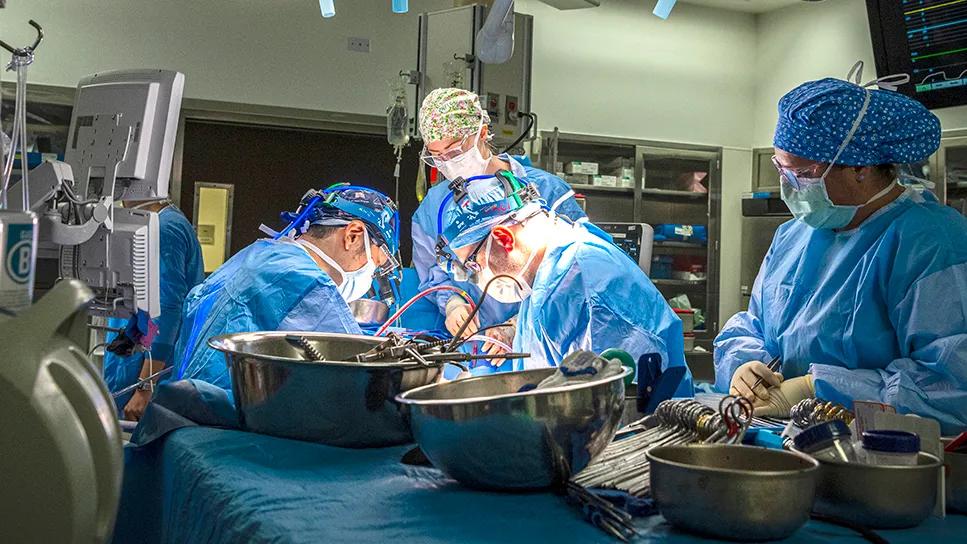ERAS brings its perioperative care principles to the cardiac arena

Cardiac surgery has joined the Enhanced Recovery After Surgery (ERAS) movement with the publication of new evidence-based guidelines offering standardized approaches for optimizing surgical outcomes.
Advertisement
Cleveland Clinic is a non-profit academic medical center. Advertising on our site helps support our mission. We do not endorse non-Cleveland Clinic products or services. Policy
“Guidelines for Perioperative Care in Cardiac Surgery: Enhanced Recovery After Surgery Society Recommendations” was published online by JAMA Surgery in early May. Authored by a multidisciplinary team of cardiac surgeons, anesthesiologists and critical care specialists, the document covers management strategies before, during and after cardiac surgery.
It’s the first set of guidelines from the nonprofit ERAS® Cardiac Society in collaboration with the ERAS® Society, an international initiative formed in the early 2000s to improve outcomes in many surgical areas. Evidence-based ERAS protocols have been associated with reductions of up to 50% in complication rates and length of stay compared with conventional management in noncardiac surgical fields.
Now, cardiac surgery could see similar improvements. “I think we’re going to see people experiencing better outcomes following a range of cardiac operations,” says Cleveland Clinic cardiothoracic surgeon Eric E. Roselli, MD, who serves on the ERAS Cardiac Society advisory board and is a co-author of the new guidelines.
“For many years there has necessarily been a lot of focus on mortality and major morbidities following cardiac surgery,” notes another co-author of the guidelines, Nick Fletcher, MBBS, FRCA, FFICM, who was recently appointed Chair of the Critical Care & Anaesthesia Institute at Cleveland Clinic London. “With mortality now very low for many procedures, it is important to shift the focus onto the patient’s recovery from surgery. Another important aspect is reducing unnecessary variations in practice.”
Advertisement
Indeed, Dr. Roselli points out that while the guidelines are very much in line with Cleveland Clinic practice in recent years — resulting in recent operative mortality rates of less than 2% despite a complex case mix — there is always room for improvement. “If we want to continue to get better, we have to pay attention to all the details,” he says.
The ERAS initiative “is a way to share best practices across different institutions and make sure we’re staying on top of the literature,” Dr. Roselli explains. “It really helps move the needle more quickly.”
The document lays out 22 potential interventions that the writing group agreed on for promoting optimal recovery, separated into sections focusing on preoperative, intraoperative and postoperative management.
Preoperative strategies covered include hemoglobin A1c and albumin measurement for risk stratification, correction of nutritional deficiency, and recommendations for consumption of clear liquids two to four hours before general anesthesia.
Also discussed is the concept of “prehabilitation,” which aims to augment the patient’s functional capacity for withstanding the stress of surgery using measures such as exercise training, nutrition optimization and anxiety reduction.
“Many surgeons will rightly focus on the technical surgical aspects relating to the patient’s cardiac disease,” says Dr. Fletcher, “but a key determinant of success and recovery is whether the patient is as preconditioned as possible with the best mental attitude and realistic expectations. This is the value of prehabilitation.”
Advertisement
Intraoperative focus areas include surgical site infection reduction, hypothermia and recommendations for use of tranexamic acid or epsilon aminocaproic acid during on-pump procedures to reduce bleeding risk.
Postoperative strategies include glycemic control/insulin infusion, pain management, systematic delirium screening, chemical thromboprophylaxis, extubation strategies, kidney stress/acute kidney injury and goal-directed fluid therapy.
The pain management and kidney sections are particularly noteworthy, Dr. Roselli believes. “The use of opioids has not been monitored as well as it could be,” he says. “The document discusses ways to reduce opioid use and dependence after surgery, and provides options for managing perioperative pain to reduce opioid requirements.”
The recommendation for use of urinary biomarkers to identify patients at increased risk for acute kidney injury (AKI) might be new to some cardiac surgeons, Dr. Roselli suspects. Some might find it surprising that AKI complicates up to one-third of all cardiac surgical procedures. “Some of the data suggest we should perhaps be looking at this more closely,” he says.
The guidelines are meant to be flexible and locally tailored, Dr. Fletcher notes. “There are aspects that some centers will not agree on,” he explains. “However, the document provides evidence to enable discussion around controversies. The principle is not to rigidly impose the recommendations but to put in place local guidelines based on these broad guidelines. Auditing compliance and outcome is also key to the ERAS work.”
Advertisement
Meanwhile, Dr. Roselli is pleased that the guideline document has received more views in its first 30 days of publication than any other article in the history of JAMA Surgery. “And this is just the first ERAS Cardiac publication,” he says. “More projects are in the works.”
Advertisement
Advertisement

Pioneering U.K. vascular surgeon joins Cleveland Clinic

Recognition reflects prioritization of long-term patient outcomes

Recommendations help distinguish exercise-induced remodeling from pathology

New phase 2 data boost hopes for phase 3 Lp(a) HORIZON trial

Intermittent statin dosing & bempedoic acid refresh the mix of options

White paper and Digital Health Summit outline key perspectives, goals

Survey finds big knowledge deficits around body shape, healthy diet

VAD expert reflects on ROADMAP, MOMENTUM 3 and what lies ahead